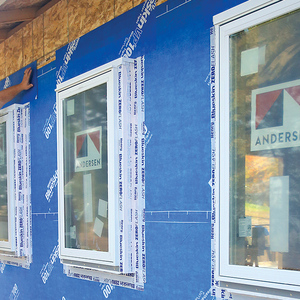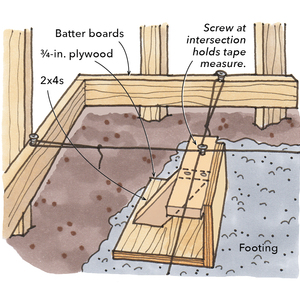I have a late 1800’s home with a gable roof. The main section has a 16 foot span with approximately a 45 degree slope. Ceiling joists and rafters are 2X4. These are rough sawn, actual dimensions are 2 inch X 3.5 inch. There are braces from the center of the ceiling joists to the rafters at the ridge board, as well as from the center of the joists to midspan of the rafters. These braces are 1 inch X 3.5 inches (actual dimensions). I would like to remove the braces to open the space for storage as well as possible future sleeping room. Rafters and ceiling joists are 16 inch on center. What size 2X ceiling joists would I need to sister to accomplish this. Would the rafters be adequate, or would I need to beef them up as well? Since I need to preserve as much headroom as possible, what is the minimum sizes that will accomplish what I want. Can I place vertical braces from rafters to ceiling joists about 3 feet from the bearing surface to decrease the required depth of the ceiling joists?
Do I need an engineer for this, or do standard spans give me the information I need?
Thanks in advance for any help.
John



















Replies
There are braces from the center of the ceiling joists to the rafters at the ridge board, as well as from the center of the joists to midspan of the rafters.
That is called a truss, ....... Boss Hog is the specialist in that area, but not if you want to cut out 50 percent of the parts! There was a 'great moments' in FHB in the late 1970's where a couple of physics majors whacked out 'that puppy" -a pipe in the attic at every other joist - that was "in the way" just before the ceiling fell.
I usually am willing to give some structural answers, but you really need to educate yourself at the library on trusses and beams, tension and compression, and then re-ask the question with more understanding of the forces at work, otherwise all you will get is Yes, yes, yes on engineer, and no, no tables, in that order for the question marks.
OK sorry, a little snappy first time, but you wont like the other answer either. 2x10 minimum sistered to the 2x4 joists, 2x12 most code areas if you are going to put a bedroom up there, 2x6 min rafters up to 2x8 depending on your snow load area. ALSO, there probably is not a "ridge beam" in which case the rafters need to tie into the new 2x12 with suitable shear connections - if you dont know about shear connections or think you can just hammer on nail plates, revert to my original response. BTW, SISTER EVERYTHING BEFORE YOU CUT ANY "braces". If you even thought of doing otherwise, be absolutely SURE to go the to library and learn about tension and compression first!!!!!
Edited 1/9/2006 10:51 pm ET by junkhound
stick built in late 1800's, I don't think that with a ridge board that this is a truss. sounds like they just hung the cieling from the top by brackets
Welcome to the Taunton University of Knowledge FHB Campus at Breaktime. where ... Excellence is its own reward!
I will defer to Boss Hog and abide by his call as to whether or not that constitutes a truss <G>
Ron; please dont say it depends on how many nails are in shear <G>
Edited 1/9/2006 11:04 pm ET by junkhound
the concluding point we agree on, that if kiddoc removes the brackets he needs to reframe
Welcome to the Taunton University of Knowledge FHB Campus at Breaktime. where ... Excellence is its own reward!
we can but hope he reads his replies before he starts ripping stuff out!All the best...
To those who know - this may be obvious. To those who don't - I hope I've helped.
There was never any question of that.
correct
I wouldn't call it a truss, as it doesn't appear to be triangulated. They just nailed some vertical members in at a couple of locations. They may be structural, or could just be something that the builder thought looked good. I'm not sure if he means a 16' overall span out to out of building, or if the span from the outside wall to the center is 16'. That would certainly make a lot of difference.Too many questions to come up with an answer...
"I hope you're all Republicans." [Ronald Reagan, speaking to surgeons as he entered the operating room following a 1981 assassination attempt]
16 foot total span from bearing to bearing.
If it's only 16' overall, I would question whether it would be worth pursuing for living space. If the pitch is 12/12, that would mean you have roughly 8' of height in the center of the room. If you sister up 2X12 floor joists and build up the edges of the rafter for added insulation, you may be down to as little as 6' of headroom at the center. Not much of a room. There may be other options, depending on what you want to do. You might be able to reframe the roof and raise the height some. Or maybe add some dormers to open up the room a bit. Hard to tell without seeing the house.Based on what you've said, I doubt the 1X4s are doing much. They may be helping to hold up the ceiling joists as they are now. But if you sister in new ceiling joists and fasten them to the old ones, they would no longer be necessary.
Hillary said that after Clinton admitted to the affair she yelled at him. She said "Why did you lie to me?" And he said "You mean this time?" [Jay Leno]
The main purpose of the room would be for storage (Xmas tree and decorations, books, etc). I was just thinking that the area would be big enough for a guest bedroom for children. Piffin's recent pictures of the small house he built (740 sq foot I believe) with the upstairs bedroom is similar to what I was thinking.
John
just remember that bedrooms always need TWO exits!
Good point!
Thanks for the reply. I am well aware of what a truss is , and this isn't. As I said, late 1800's. The roof was stick built. The vertical braces are 1X, so I believe that the ceiling joists are essentially hung from the rafters to obtain the 16 foot span. Certainly not the way it would be framed today, but I have to admit that the ceiling is not sagging at all.
JohnPS You are right, it is not a ridge beam, but I didn't call it that. It is a ridge board.
Edited 1/10/2006 8:22 am ET by kiddoc
Sounds like in any case you are looking at a lot of work.
Even with a 12 in 12 pitch, at a 16 foot span, that does not end up witha very big space. You put in 4 foot high knees walls and you have an 8 foot wide room. For storage this would be fine, but living space?
So if storage then it appears from other posters here you could get by with small material. Which considering the small space would be a whole lot easier to work with.
Good Luck.
To eliminatethe brackets, you need new raafters and joists to span the distances. The normal span table swill tell you what size by modern styandards and lumber. The things that may vary are: your local requirements for live loads such assnow load on roof and live loads requirement for attic - as unliveable storage space vs for living space, and what deflection is allowed or acceptabel to you.
For light storage, I would use 2x8 to span that, but overall with potential for future living space, 2x10 would be needed. shortening the span by hanging from a rafter then requires a larger rafter than otherwise. Of course a heavier rafter allows more room for insulation and ventilation. some engineering might be handy because you could be missing something, and there has to be a ddecision whether you are hanging the cieling from the rafters or vice verse
Welcome to the
Taunton University of Knowledge FHB Campus at Breaktime.
where ...
Excellence is its own reward!
Thanks for the reply.
First let me say that I build new houses - don't do remodeling. I qualify my answer because we get a lot of people around here making seemingly concrete statements about stuff they have never actually done themselves.
That said, a modern day structure would never be framed with 2x4 ceiling joists and rafters at that span. I think you know that. Although your structure's lumber is better/stronger/larger than modern day 2x4s I'm thinking that it doesn't make a x2 difference. Assuming that your current structure is holding up OK, it's undoubtedly because of the bracing - the ones you want to remove.
So, if you want to remove the braces you are going to have to reframe the roof.
BTW - we are assuming that the 16' is clear span - meaning that there is no load bearing walls other than the 2 - one at each end of the 16'.
As far as the ceilingjoists/attic floor, where I live the rule of thumb is this: for a floor system for a habitable space that has access via a stairs you need min 2x10 floor joists. 16' is definitely pushing it for 2x10s if you want a solid floor system. 2x8 floor systems are OK for ladder access storage areas, but 16' is too big a span.
Another consideration is that you are basically talking about adding a 1/2 story to the structure. Either converting a 1 story to a story and a half, or a 2 story into a 2 and a half. As soon as you start doing that, if there is any building permits/building inspectors/etc involved, they are possibly gonna want to look at your foundation. That's a whole new bag of worms with a structure that old.
BTW - here is a little background info:
1) A roof with a 45 degree slope is a 12:12 pitch which means that for every 12" of rise there is 12" or 'run'. building people normally talk interms of pttch, not degrees of slope.
2) >>There are braces from the center of the ceiling joists to the rafters at the ridge board.<< Assuming these are vertical, and go to the ridge, these would probably be called "king posts". http://www.nycoveredbridges.org/page41.html
gotta go to work now...
I'm not sure that the vertical brace would qualify as a kingpost due to it's dimension (1X material), but I'm not sure what the true definition is.
John